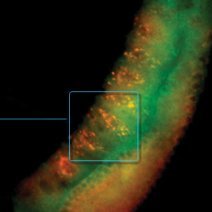Vertical transmission in Caenorhabditis nematodes of RNA molecules encoding a viral RNA-dependent RNA polymerase.
Richaud A, Frézal L, Tahan S, Jiang H, Blatter JA, Zhao G, Kaur T, Wang D, Félix MA.
Abstract
Here, we report on the discovery in Caenorhabditis nematodes of multiple vertically transmitted RNAs coding for putative RNA-dependent RNA polymerases. Their sequences share similarity to distinct RNA viruses, including bunyaviruses, narnaviruses, and sobemoviruses. The sequences are present exclusively as RNA and are not found in DNA form. The RNAs persist in progeny after bleach treatment of adult animals, indicating vertical transmission of the RNAs. We tested one of the infected strains for transmission to an uninfected strain and found that mating of infected animals with uninfected animals resulted in infected progeny. By in situ hybridization, we detected several of these RNAs in the cytoplasm of the male and female germline of the nematode host. The Caenorhabditis hosts were found defective in degrading exogenous double-stranded RNAs, which may explain retention of viral-like RNAs. Strikingly, one strain, QG551, harbored three distinct virus-like RNA elements. Specific patterns of small RNAs complementary to the different viral-like RNAs were observed, suggesting that the different RNAs are differentially recognized by the RNA interference (RNAi) machinery. While vertical transmission of viruses in the family Narnaviridae, which are known as capsidless viruses, has been described in fungi, these observations provide evidence that multicellular animal cells harbor similar viruses.
Proc Natl Acad Sci U S A. 2019 Dec 3 ;116(49):24738-24747. doi : 10.1073/pnas.1903903116.


